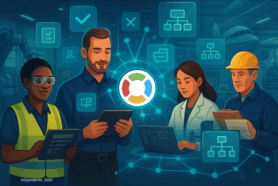
The time taken from the time a commodity is shown to a customer till the time it is removed from the shelf is called the product sustainability or life-cycle. Display, extension, maturity, and deterioration are the main phases. It is a crucial decision-making factor for the officials and the company owners when growing a business.
Crucial verdicts like when to expand production and advertising strategies depend on the lifecycle. So what is PLM? How can we define a series of phases of the product? Why is it crucial for company executives?
It is all about searching for new ways to manage the series of events for products. It may help to sustain and keep the yield on the barter for a longer period. Let’s find out more information about fundamentals, the definition of a product life cycle, the stages, and why it is a priority.
Fundamentals of PLM
Managers can gain more insight on whether to escalate or reduce prices and how to switch to different packaging by applying the fundamentals. Using the average lifecycle time can also be a great way to launch a product to new targets or make changes that will favor expansion. All these strategies are directed towards increasing the profit and thus the product circulation.
What are the product life cycles? Engineering product life cycle management is the management of data used in material design, production, commerce, and sales. The sustainability of the commodity is all about the steps an item will take from ideation till it reaches the target market.
So it not only emphasizes production but on commerce strategies as well. PLM has a long history in the industry that dates back to the 18th century. In the 21st century, it usually refers to software that makes shelf-life longer.
Proper handling and dealing with the series (when it is shown to the customer till it is either declined or bought) is important for so many reasons. One of the reasons is that it provides manufacturers with better ways to produce goods, sometimes even at a lower cost. Reducing the cost and improving the quality leads to higher profits.
PLM also makes the processes more efficient, therefore, reducing the time it takes for goods to reach the customers. It doesn’t only start with manufacture but involves the entire supply chain.
How PLM Works
Each retailing item has its series of events. It begins from the moment that someone comes up with the idea. After more research, you can start adding data. Once enough data has been gathered, the material can move through creation, commerce, and circulation.
You can focus on the following useful and profitable stages:
- Introduction: the process involves telling the target audience about the model, its benefits, and improving the awareness of the commodity among people.
- Development: in this phase, the item’s popularity increases; with the increasing demand, the supply will also heighten.
- Maturity: manufacturers get more profit as the cost of creating the commodity decreases.
- Decline: as start-ups become more competitive, offering better commodities or selling at cheaper prices, the value of the commodity decreases.
6 Stages of the Product Life Cycle
Prototyping
Prototyping is also known as the initiation phase where a commodity is launched into a specific target audience. The team responsible for launching the commodity and following the trends can begin their strategies that will heighten awareness among people. When a commodity is first introduced on a market, the returns and profits are usually low.
Several people wanting the commodity should gradually start expanding over time. The phase focuses on bolstering and developing effective awareness campaigns. Another target is to try different circulating channels while educating clients what the item is all about and why they have to use it.
Development
Development usually comes before introducing merchandise to a target audience. Focus on research is the highlight.
At this stage the goal is to:
- Find investors
- Test different prototypes
- Provide tests
- Find effective launching strategies
Companies usually end up spending a lot of money during the development. No revenue is made at this point since all the funds go towards developing items. The duration of the phase is related to the complexity of the commodity that a business will develop. Creating merchandise straight from raw materials can cost a lot and take more time.
Production / Growth
When an item has already been developed, production can start. Once the merchandise is launched, the sales should rise over time, meaning it’s the growth phase. It is characterized by a sharp rise in sales and profits. Companies can manufacture more items now thanks to high earned profits.
Businesses need to take advantage of this stage to maximize profits. It may involve investing more money to improve a commodity or have better marketing strategies. That way the profit margins and overall revenue will increase.
Maintenance / Maturity
Once you reach the maturity phase, it means that an item has already been established on the market. The goal now is to focus on maintenance. It simply refers to the fact that you maintain the position on the market.
The continuance stage is highly competitive as you are required to come to calculated settlements. Each decision made is directed towards staying competitive and making profits. Additionally, consideration should be made towards effective marketing strategies that would lead to more clients.
Recycling / Decline
At some point, the popularity and demand for a product will start reducing. This can happen due to various factors. One of the common ones being a rise in competitors.
Competitors may offer highly-improved items and services or sell at a cheaper price. If the market is becoming very saturated it can be difficult to avoid. However, you can still make profits if you decide to reduce the manufacturing cost and improve your services. Switching to a cheaper market can also reduce the rate of the decline of a good.
5 Benefits of PLM
- Enhanced productivityPLM leads to boosting the productivity of a company. Instead of teams performing redundant tasks, they can focus on more important things like problem-solving. PLM consolidates all data relevant to the product life cycle.
- Risk managementIf there isn’t any compliance between the production and delivery, there can be a lot of damage. This can result in heavy losses. PLM provides better risk management by reducing lags, providing more data, and making sure that the raw material is readily available. Engineering product lifecycle cycle management software reduced risks through effective planning and access to data.
- Faster time to marketStaying ahead of the competition means being able to supply items faster. PLM can make it easier for companies to deliver a commodity in less time. Seamless correspondence between different teams and access to data leaves little room for errors.
- Cost-effectiveWith a PLM, manufacturers can view every team that will participate in the creation of a good. Thereby, allowing a better way to calculate expenses and make changes wherever needed. It becomes easier to search for cheaper distributors and marketing strategies.
- Improved product qualityCombining consumer and item data has shown to be an effective way to meet customers’ requirements. This lets the businesses not only create innovative decisions but also make sure that customers are satisfied.
Why It Is Important to Understand the Product Life Cycle
It is important to understand the management product life cycle for the following reasons:
- Better item quality
- Improved productivity of the entire team
- Reduced time to market
- Better risk management
- Reduced costs for prototyping
- Faster processing of requests
- An easier way to recognize opportunities
When you have a clear understanding of a life cycle, you can take the necessary steps to improve sales and profits. It will also help you to know how product lifecycle management software can lead to more profits.
Examples of Product Life Cycle Management and Decline
VCR / CD / Streaming Devices
The VCR was very popular in the late 90s. But with the growth of the internet, online streaming services like Disneyplus, Netflix, and Amazon have taken over. With VCRs in decline, they are no longer as profitable as they once were.
As the industry was moving to CDs, VCRs manufacturers moved to CDs and later to DVDs. Fast forward, as we move to stream services, the same manufacturers are switching to the production of new streaming services and devices.
Typewriter
When typewriters were first introduced they gained a lot of popularity. However, when computers were launched, programs like Microsoft took over. Now people can type from computers and even their mobile phones. Thus the revenue for typewriters has significantly gone down and manufacturers were switching to computers and other electronic devices.
Electric Car
Car manufacturers are moving into a new development of EVs. While they still represent a small percentage of the overall market, car manufacturers’ R&Ds are almost entirely focusing on EVs. Traditional vehicle development is on a decline and trajectory to be in the maintenance phase.
PLM Benefits with OpenBOM Service
OpenBOM has come up with effective ways to help companies manage a life cycle. Through improved communication and data management, businesses will be in a better position to make profits. OpenBOM uses cloud-based technology to solve any challenges that a business might have during manufacture, marketing, and sales.
OpenBOM can assist both small and middle-sized companies to enhance the entire process, manage data, improve communication between teams, improve management of risks in the life cycle of production, and more!
Check how OpenBOM can help – REGISTER FOR FREE and start a 14-days trial.
Best, Oleg
Join our newsletter to receive a weekly portion of news, articles, and tips about OpenBOM and our community.









